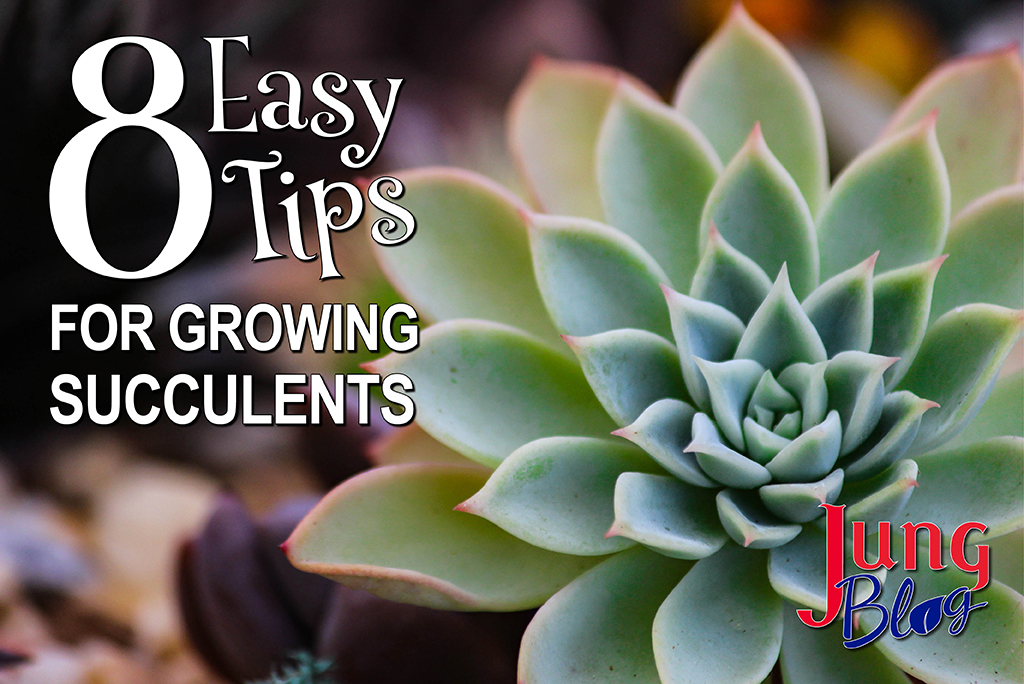
Have you forgotten to water your plants? Most of us can remember when we neglected a houseplant, only discovering it was too late to save it. Succulents are plants that thrive on neglect, making them easy to grow and maintain. This group of plants has the unique ability to store water in their leaves, allowing them to go without water for extended periods. Drought tolerance is only one feature of these remarkable plants. Succulents come in various shapes, sizes, and colors, ideal for gardeners with different preferences.
Growing succulents is easy, but there are a few things to consider before heading to the nursery.
Soil
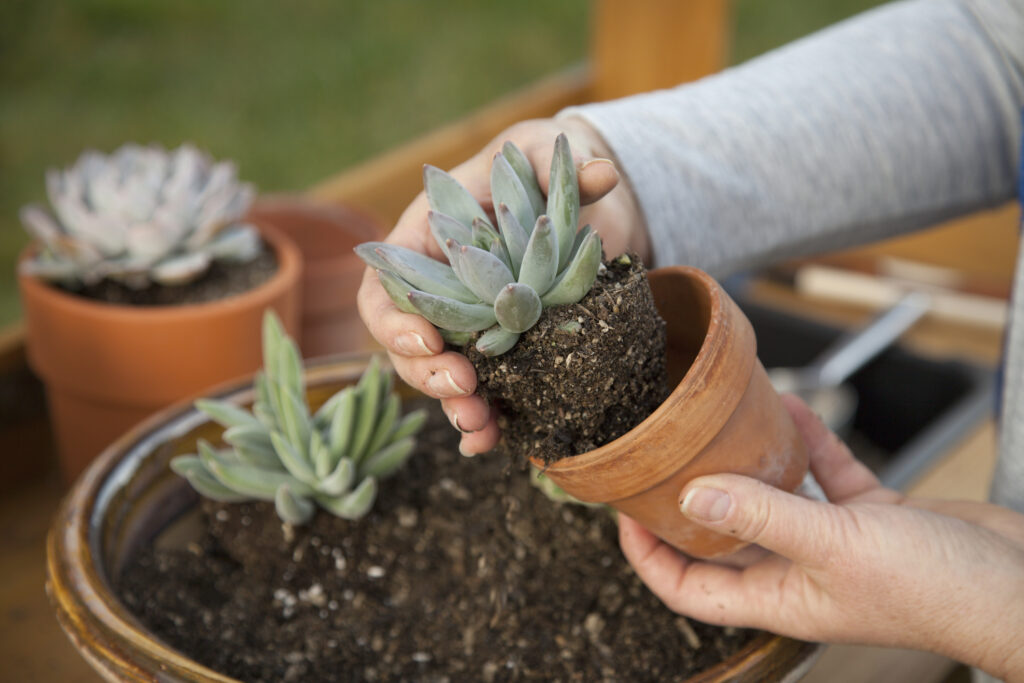
Succulents require soil with sharp drainage. Soil that stays wet for long periods will cause roots to rot. Many types of potting mix contain peat, an organic material that holds water, making it suitable for many plants but challenging for succulents. You can amend potting mix by adding perlite, gravel, or sand. A ratio of 1:1 potting mix to soil amendment is adequate for succulents.
Decorative containers are often used for succulents, but make sure you use pots with drainage holes. Drainage holes prevent salt and water from sitting in the container.
Light
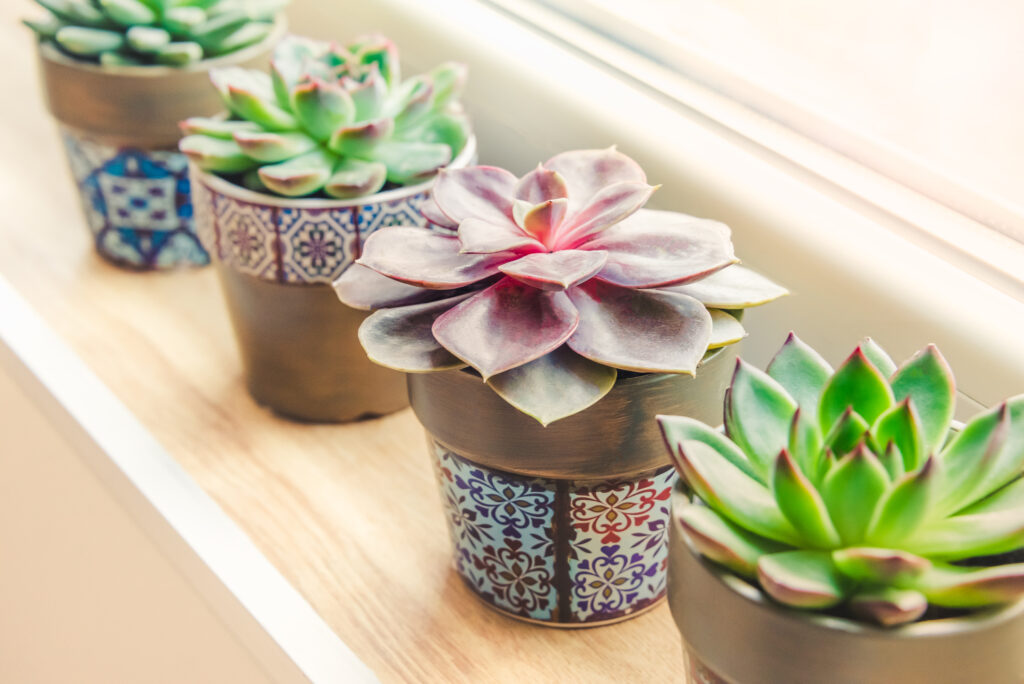
Succulents need plenty of light to thrive. A south-facing window is ideal for growing succulents indoors. If you don’t have access to bright windows, consider using a grow light. Grow lights are easy to use and a good source of indoor light.
Succulents and other plants will stretch for light if they’re not getting enough sun. Some succulents naturally grow leggy, while others remain compact. Understanding your plants’ growth habits allows you to see the difference between normal growth and insufficient light. Succulents often have flower stems that grow much taller than the foliage, creating the appearance of leggy growth. Researching the plant can help you determine if you’re seeing a flower stalk or leggy growth. If your succulents are becoming leggy, it’s time to give them more light.
A few succulents thrive in shady areas. One example is the Christmas cactus, which naturally grows in trees under a forest canopy.
If you’re moving succulents outdoors for the summer, acclimate them to bright light. You can acclimate plants by setting them in a shaded area for a week and then gradually exposing them to sunlight. Acclamation helps plants adjust to higher light levels. Failing to acclimate your plants can lead to scorched leaves.
Watering
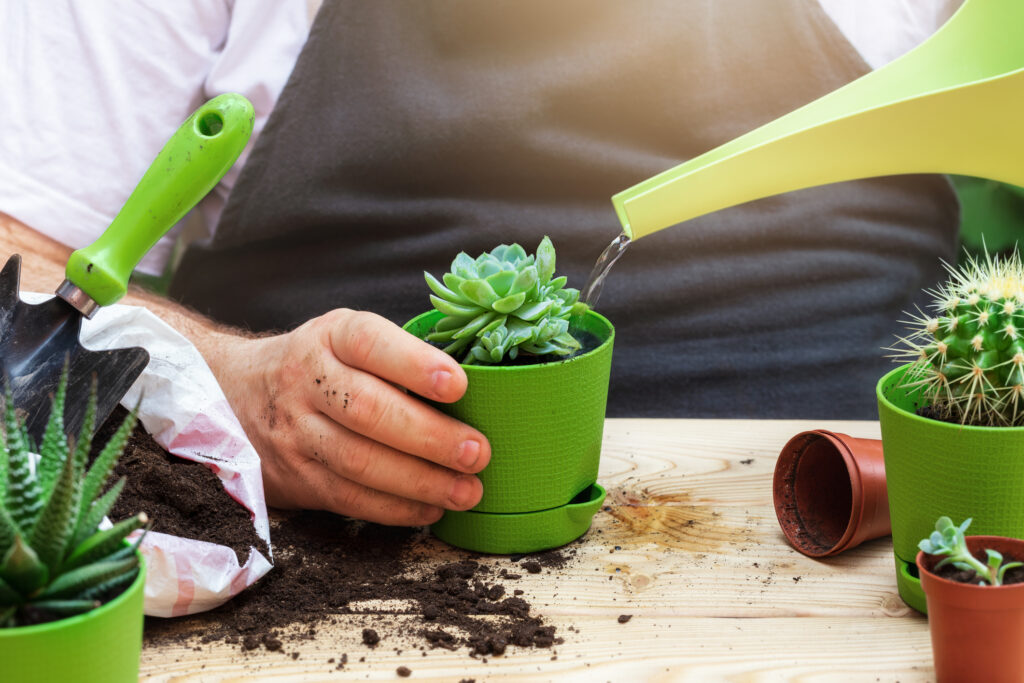
Succulents are not demanding, but they can be picky about watering. As gardeners, we sometimes forget to water plants, but we may encounter the opposite problem as well, overwatering. When growing any plant, watering frequency is one thing to keep in mind.
Watering on a schedule can be convenient but is often not suitable for the plants. Watering should be done based on the moisture levels in the soil. Many plants prefer consistently moist soil, but succulents are different.

When growing succulents, allow the soil to dry before watering. You can stick a dowel in the soil to check the moisture levels. Moist soil will attach to the dowel, while dry soil will fall off the dowel. If in doubt, consider waiting a few days before watering.
Succulents require more water during active growth, typically late spring and summer. Watering should be less frequent during winter, as many succulents are dormant and use little water. Many succulents have firm, fleshy leaves that begin to soften if the plant needs water.
Succulents can recover from underwatering, but overwatering is challenging to correct. Overwatering prevents oxygen from getting to the plant roots and leads to root rot.
Temperature
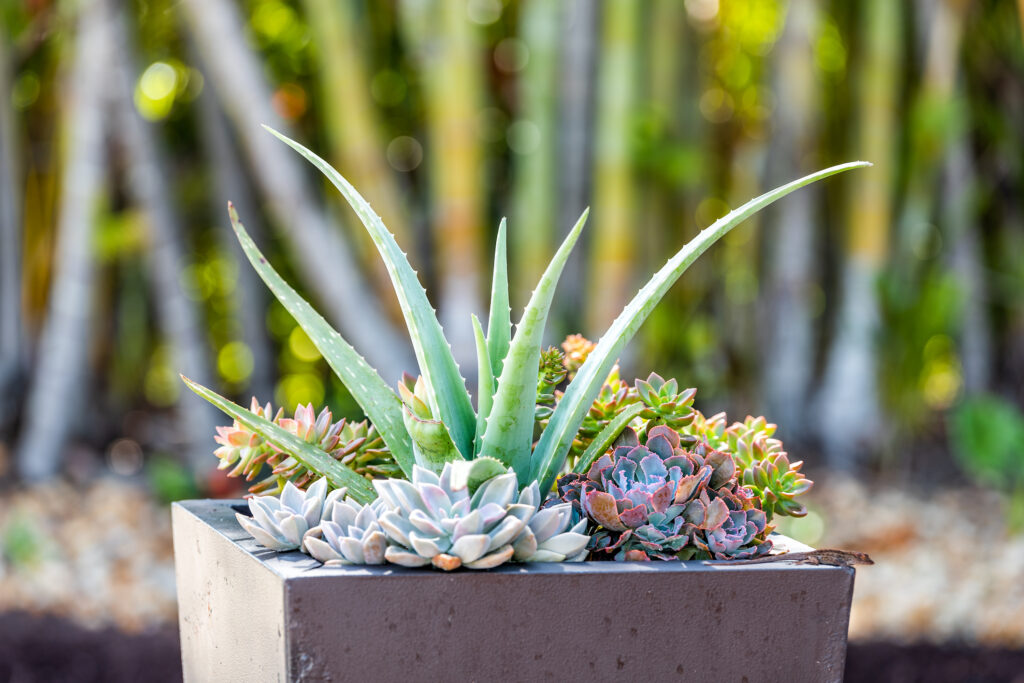
Many succulents are tender and don’t tolerate cold, while other succulents thrive in cold climates. Succulents grown as houseplants are usually tender and should be given temperatures above 50°F throughout the year.
Most succulents love heat and will grow best in outdoor conditions during summer. You can keep succulents outside when nighttime lows are above 50°F. The fluctuating temperatures in spring and fall can make it challenging to move succulents outside, but here’s a tip. Keep the soil dry.
Succulents are prone to root rot if grown in cool and wet soil. Many succulents can withstand lower temperatures when the soil is dry, allowing you to keep the plants outside longer if the temperature stays above freezing. Remember to keep the plants sheltered to avoid rain during cool weather. When your plants are inside, keep them away from drafts, like cold windows or vents.
Fertilizer
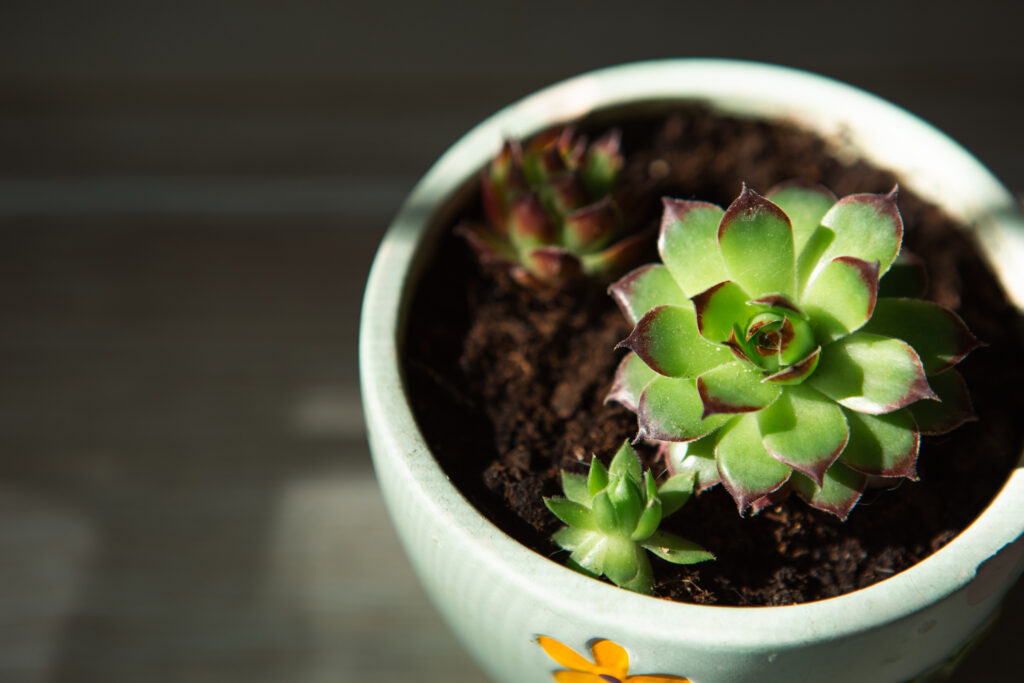
Succulents thrive in soil with few nutrients, but occasional fertilization promotes more robust growth. The ideal time to fertilize is late spring into early summer when succulents actively grow and absorb nutrients. Houseplant fertilizer that is high in phosphorous is ideal for succulents. Succulents require fewer nutrients than many plants, making it reasonable to dilute the fertilizer to half the recommended rate. Fertilizing is not recommended in winter or anytime succulents are dormant.
Pests
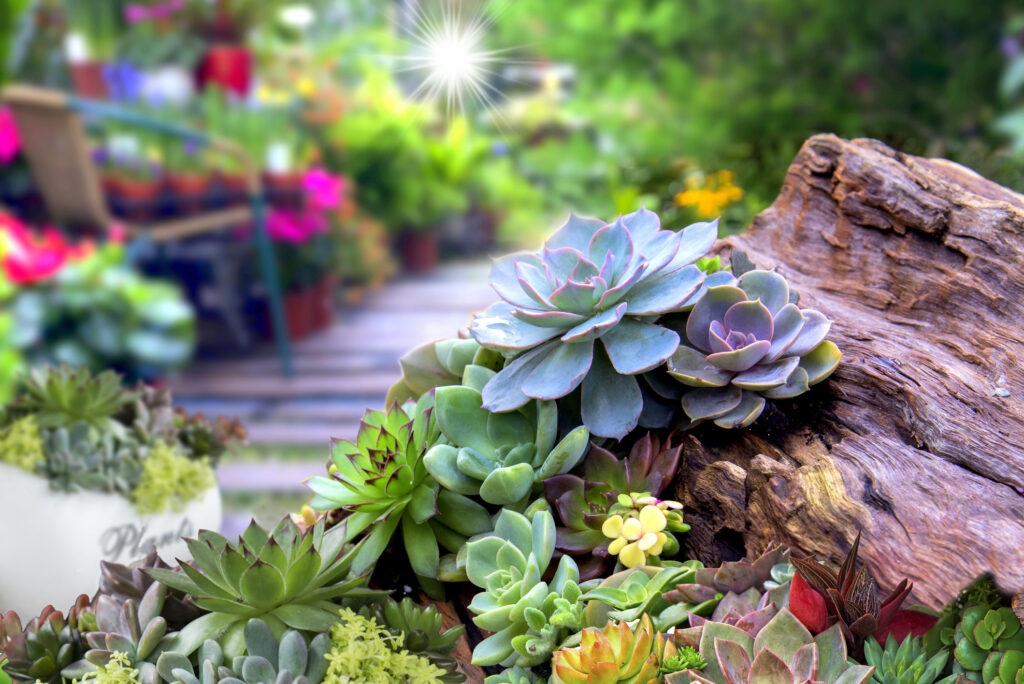
Succulents have few pest problems, but it’s good to watch for problems. Insect pests are occasional problems for indoor plants. Pests are typically found in leaf crevices and stems. Inspecting your plants will go a long way in preventing future problems. A good strategy to avoid problems is to give your succulents the proper growing conditions, reducing stress on the plants.
Propagation
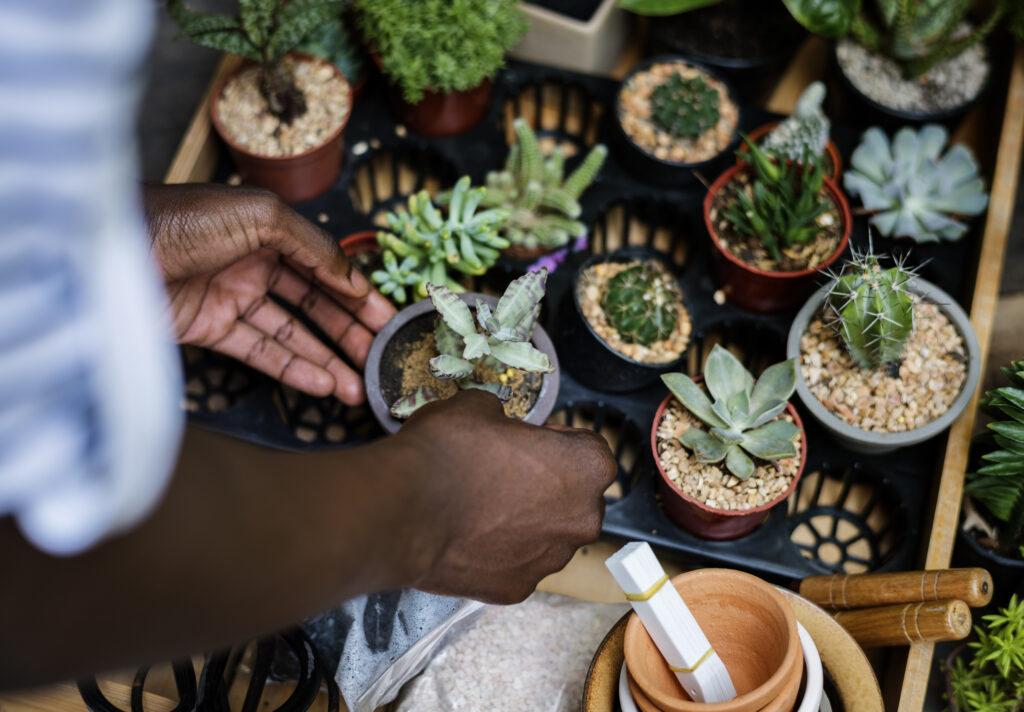
Many succulents can be propagated from stem cuttings. Before propagating your plants, be sure to research the propagation requirements for your specific plant species.
Mixing Different Types of Plants
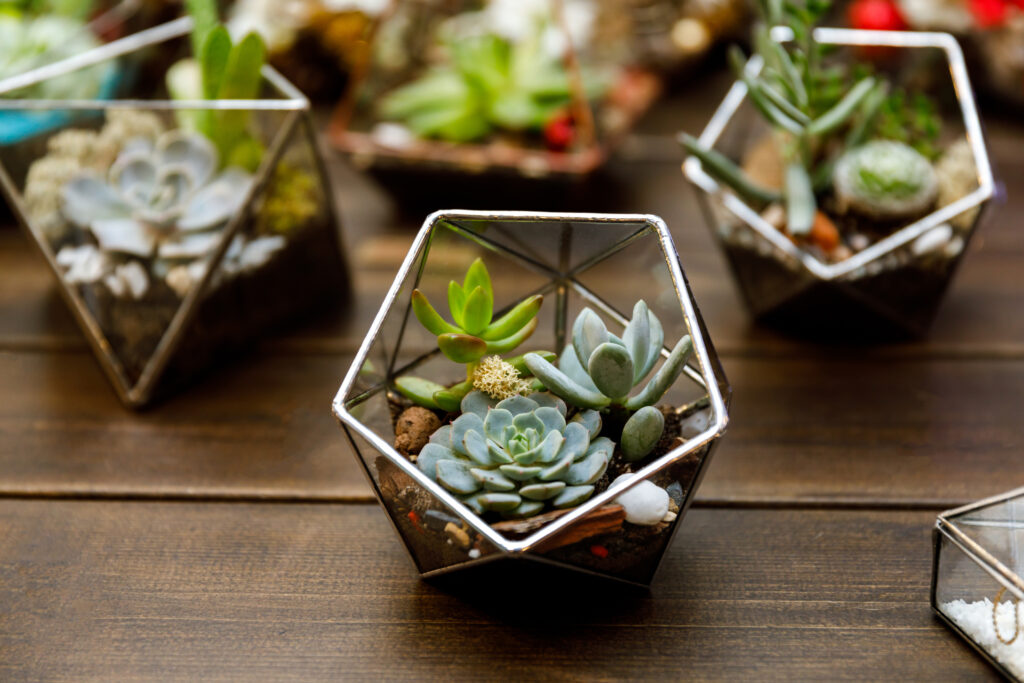
Mixed succulent containers are popular, but there are a few things to consider when growing different types of plants together. Each species has specific water requirements and growth habits, making it difficult to keep two species mixed for long periods.
To grow a successful mixed container, you should only mix plants with similar characteristics and water requirements. Otherwise, you may encounter plants that don’t grow well together, leading to future problems.
Succulents allow us to showcase our creativity with their many attractive features. Whether you’re an expert gardener or a beginner, succulents will enhance your gardening experience.
Just Succ It is a succulent gift and design company founded by Andrea Galbreath. Her passion is planting happiness and laughter across the country. Check out her YouTube Channel for all things succulents including her Top Tips for Succulents video!
View Jung Seed’s newest catalog online or browse our website for all of your gardening favorites. To receive info on new products, exclusive deals, and specials, be sure to sign up for our weekly email. Join our Facebook page, to discuss all things gardening!
About the Author: Matthew Olson is a professional horticulturist and garden writer. He has a bachelor’s degree in horticulture from UW-River Falls and is a certified professional with the Minnesota Nursery and Landscape Association. His enthusiasm for plants and the outdoors brought him to the green industry. He regularly writes articles about gardening for both gardeners and industry professionals. He can be reached at matt@mattolsonhorticulture.com